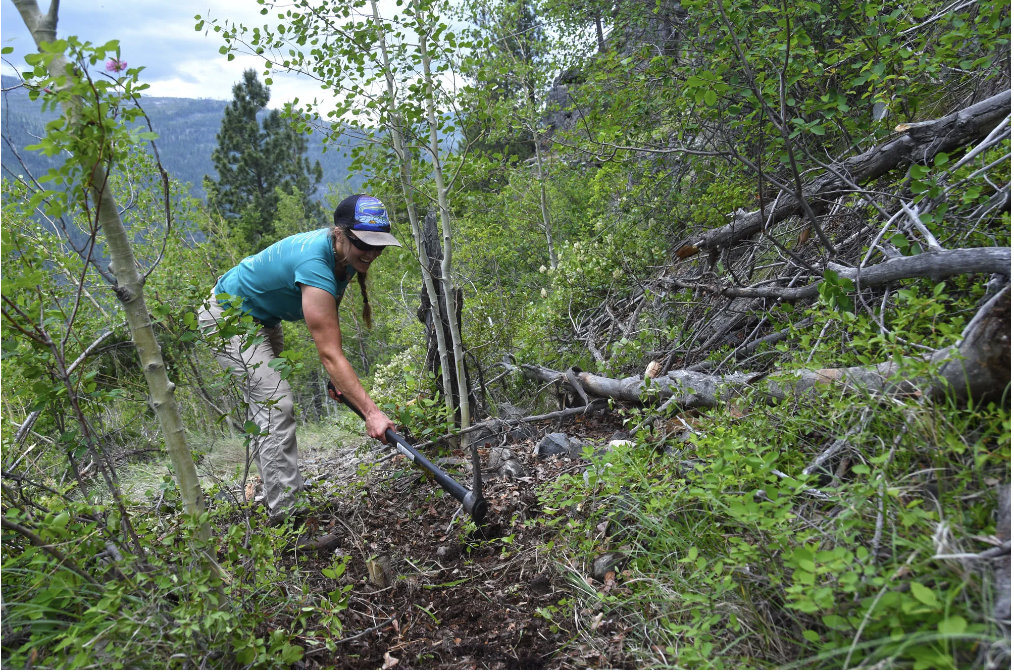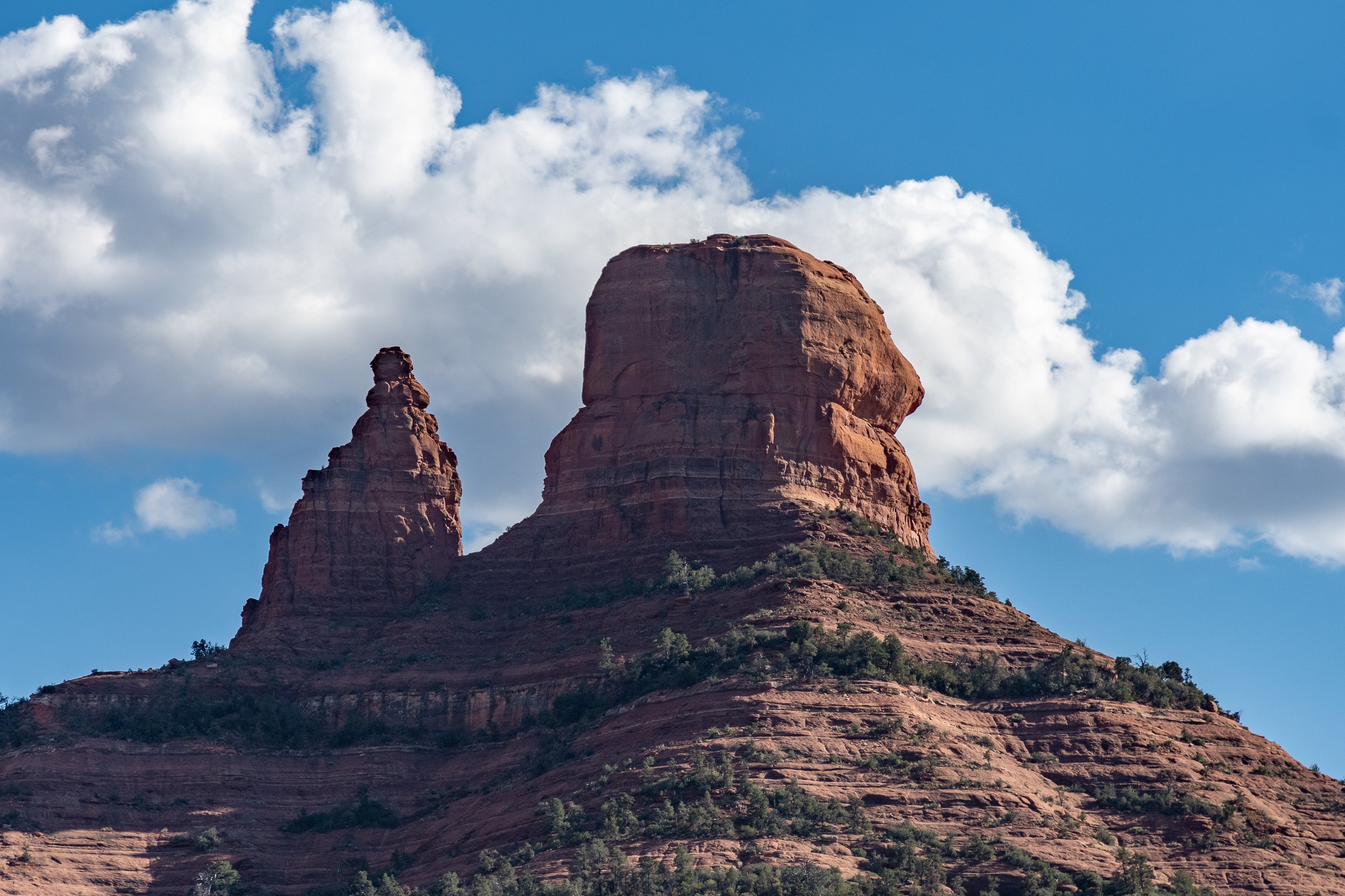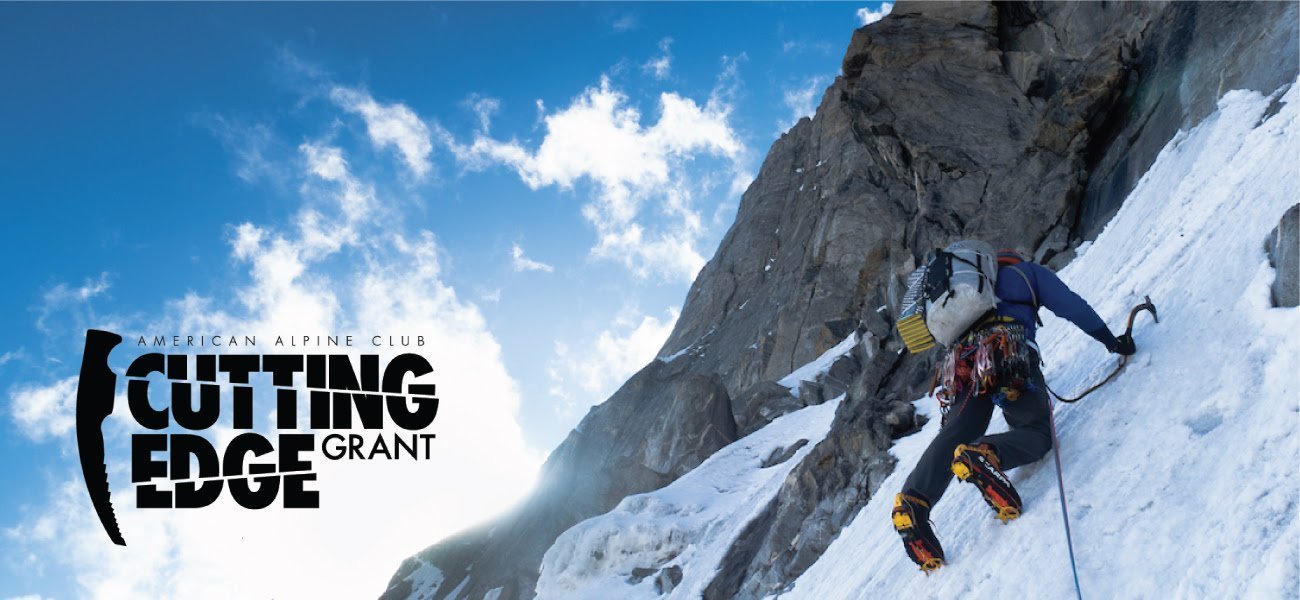A trail worker from Save Mount Diablo. Photo provided by Save Mount Diablo.
April 2023
The American Alpine Club and REI are pleased to announce the 2023 Cornerstone Grant recipients. The AAC Cornerstone Conservation Grant was formally launched in 2011 to fund projects to improve, conserve, and protect local climbing resources nationwide. Seven local climbing organizations (LCOs), land managers and agencies, nonprofits, and individuals have been awarded a total of $25,000 for this grant cycle, for projects such as building or improving trail networks to climbing areas; establishing new toilet facilities and signage at trailheads; and deploying a variety of community groups for clean-up and graffiti removal at local crags.
Summersville Lake, West Virginia.
New River Alliance of Climbers will receive $5,000 for the Whippoorwill Restoration Project in Summersville Lake, West Virginia. All funds will go towards purchasing materials needed to complete the project: gabions, stone stair treads, split rail fence, and seeds for re-vegetation.
Carolina Climbers Coalition will receive $4,000 for the Table Rock Climbers Trail Rehabilitation in Table Rock, Linville Gorge, North Carolina. Funds will be used to rehabilitate the Table Rock Climbers Trail, a new NEPA-approved trail to a historical climbing area.
Northwest Montana Climbers Coalition will receive $1,000 for the Stone Hill Signage Project in Lake Koocanusa, Montana. Funds will be used for signage materials and installation tools.
Workers from the Stone Hill Trail Network Project doing restoration work. Photo provided by Stone Hill Trail Network.
Black Folx Rock will receive $5,000 for the Diversity in Conservation Project in Papago Park, Arizona. Funds will be used to create a trail, restoration, clean-up, signage, bridge creation, and erosion reduction for a heavily used rock climbing area.
Save Mount Diablo will receive $5,000 for the Pine Canyon Cleanup & Mount Diablo Adopt-A-Crag at Mount Diablo State Park, California. Funds will be used for equipment rental, fuel for equipment, PPE for volunteer participants, materials and tools for graffiti and litter removal, and limited staff time.
Upper Peninsula Climbers' Coalition will receive $2,000 for the Slugg's Bluff restoration in Palmer, Michigan. Funds will be used for gravel, road grading, trail work, and fencing for the community garden.
Mount Diablo State Park, CA
Western Massachusetts Climbers Coalition will receive $3,000 for a trail steward program in Farley Ledges in Erving, Massachusetts, Hanging Mountain in Sandisfield, MA, and other locations in Western MA. Funds from the AAC Cornerstone Grant will pay for training for trail leaders and volunteers, cover the cost of a volunteer tracking and waiver system, buy miscellaneous tools and materials, and pay the cost of a part-time paid operating executive to manage the program.
Applications for the Cornerstone Grant are accepted each year from October 1 through December 31.
Contact:
Shane Johnson, Chief Marketing Officer: [email protected]
Eddie Espinosa, Community Programs Director: [email protected]





























